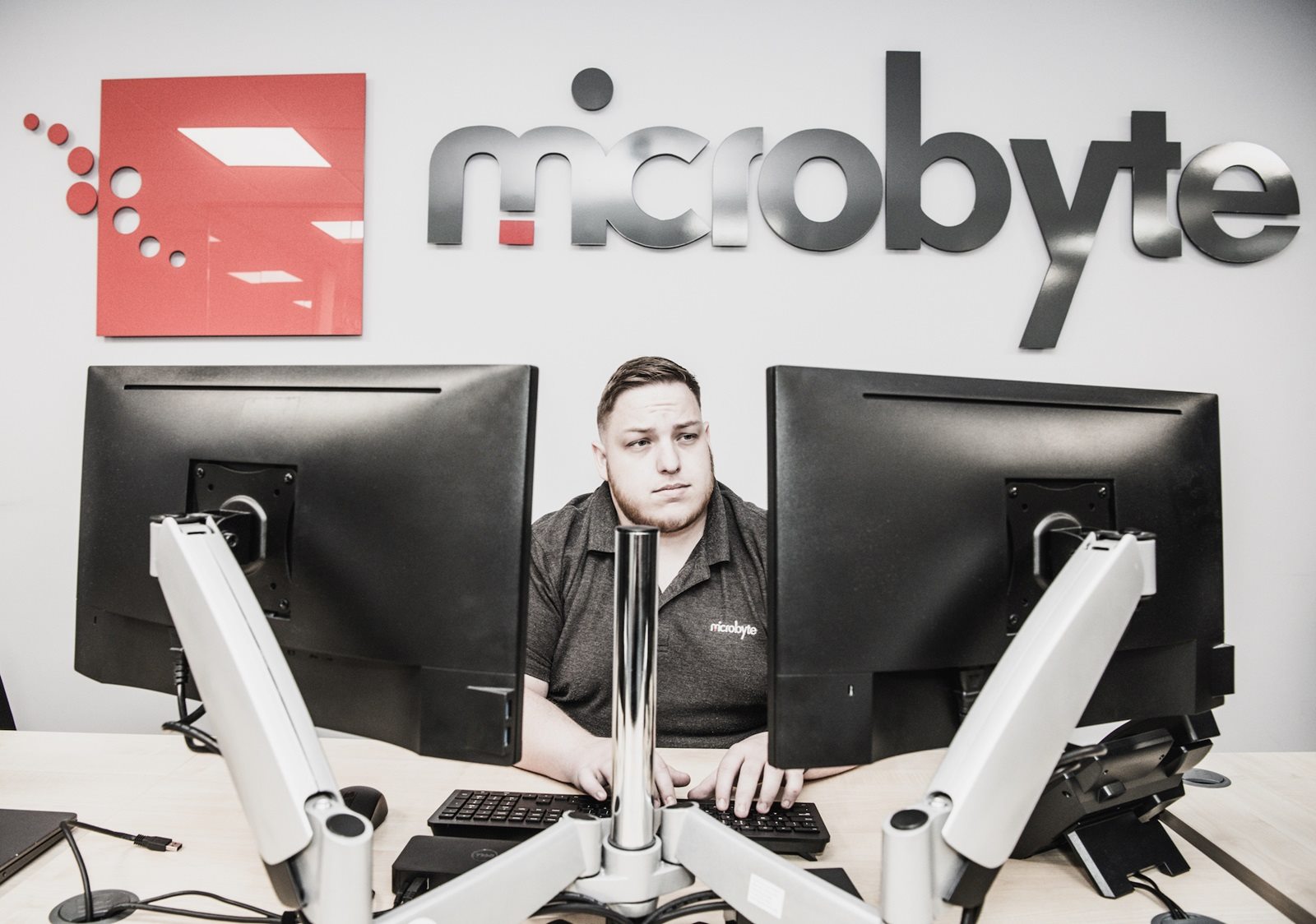
As technology continues to drive businesses around the world, the role of IT helpdesks has evolved into a pivotal force, serving as the central point for user support and technical issue resolution. With organisations increasingly reliant on intricate digital infrastructures, the efficiency of IT helpdesks becomes paramount in ensuring seamless operations.
Enter Standard Operating Procedures (SOPs), the secret weapons of helpdesk management. These meticulously crafted protocols provide a structured framework for addressing common issues but are also indispensable tools to help standardise and optimise helpdesks.
Read on to find out more about the relationship between IT helpdesks and SOPs, and learn how the implementation of standardised procedures can revolutionise the performance of your IT support helpdesk.
Understanding Standard Operating Procedures
SOPs are at the heart of IT helpdesks, so a comprehensive understanding of what they are and how they can be used to optimise operations and routine tasks is vital for any business.
An SOP, succinctly put, is a set of clear-cut directions and instructions designed for a specific task. Standard Operating Procedure documents guide uniformity, significantly reducing miscommunication and ensuring adherence to established standards.
It’s important to distinguish between a process document and an SOP document; while a process document offers an overarching view of a particular process, an SOP provides detailed, step-by-step instructions and a fundamental perspective that can be used to conduct training and used by the entire team.
SOP documents guarantee the consistent execution of routine operations and specific tasks, promoting a reliable and efficient workflow. Perhaps even more importantly, SOPs can ensure regulatory compliance, offering a structured approach to guarantee protocols align with industry standards and legal requirements.
Moreover, SOPs serve as reference guides for problem-solving, empowering IT support teams to ensure consistency and a certain quality level when addressing various technical issues; it’s a strategic investment in the precision and effectiveness of IT helpdesk functions.
Benefits of Integrating SOPs in an IT Helpdesk
SOPs, when used correctly, can have a transformative effect on IT helpdesks and anyone who relies on them. From streamlining workflows to improving service quality and allowing for a systematic approach to resolving issues, SOPs are a guiding compass for your business.
Ensuring Adherence to Best Practices and Quality Assurance
Transforms Best Practices into Actionable Steps: SOPs bridge the gap between theoretical best practices and actionable, step-by-step guidelines. They translate abstract principles into practical processes, offering a tangible roadmap for IT helpdesk teams.
Provides a “True North” for Teams: By outlining the ideal procedures and methodologies, SOPs serve as a compass for teams, ensuring that they consistently navigate towards the established best practices. This clarity helps maintain a unified direction for the entire helpdesk operation.
Raises the Quality Bar Through Best Practices and Consistency: Implementing standard operating procedures can also help ensure quality by incorporating industry best practices. The consistent application of these practices ensures that the helpdesk operates at a high standard, delivering reliable and effective support to end-users.
Achieving Consistency and Efficiency
Establishes Uniformity in Operations: SOPs create a standardised approach to tasks, promoting consistency in how different team members address similar issues. This uniformity enhances overall efficiency and fosters a sense of reliability in service delivery.
Reduce Errors and Miscommunication: Clear and defined SOPs leave little room for interpretation, minimising the chances of miscommunication or misunderstandings. This reduction in ambiguity streamlines communication within the team and with end-users, leading to smoother operations.
Provides Detailed Instructions, Fostering Effective Communication: SOPs are a useful communication tool, offering clear instructions that leave little room for ambiguity. This clarity minimises misunderstandings, promoting effective communication within the helpdesk team.
Facilitating Proper Onboarding and Training
Clearly Defined SOPs Make Employee Onboarding Easier: New team members can swiftly integrate into the helpdesk environment when presented with well-defined Standard Operating Procedures documents. This facilitates a smoother onboarding process, enabling quicker adaptation to the team’s operational protocols.
Prepares Employees for Potential Challenges: SOPs provide a comprehensive understanding of common challenges and their solutions, preparing employees for potential issues they may encounter.
Documentation Ensures Knowledge Remains Even with Team Changes: SOP documentation acts as an institutional knowledge base as team members come and go. Documented Standard Operating procedures ensure that critical information is retained, preventing knowledge gaps during training sessions.
Ensuring Regulatory Compliance and Reducing Risk
Demonstrates Adherence to Industry Standards: SOPs provide a tangible record of how the helpdesk operates in compliance with industry standards and regulations. This documentation becomes crucial during audits or assessments, showcasing the commitment to regulatory adherence.
Details Safe Practices, Reducing Accidents or Injuries: For tasks involving physical components or potential risks, SOPs include guidelines for safe practices. This reduces the likelihood of accidents or injuries, contributing to a safer working environment for the IT helpdesk team.
Key Service Desk KPIs to Monitor
Unlocking the full potential of IT helpdesk operations relies on the strategic integration of SOPs. When introducing Standard Operating Procedures, businesses need to monitor progress to ensure new SOPs are practical and are optimising the helpdesk. Measurable Key Performance Indicators (KPIs) provide a roadmap to monitor and adapt SOP documents to meet organisational goals.
KPIs could include:
- Average Issue Handle Time
- Help Desk ROI
- Help Desk Support Employees per End-Users
- Mean Time Between Failures (MTBF)
- Mean Time to Repair/Recovery (MTTR)
- Recovery Point Objective (RPO)
- Recovery Time Objective (RTO)
Utilising KPIs is imperative to gauge the effectiveness of any Standard Operating Procedure within an organisation. Gathering qualitative data and monitoring KPIs ensures SOPs are implemented correctly and aligned with business goals, improve efficiency, don’t clash with company culture and offer measurable improvements contributing to the support centre’s success.
Steps to Create an Effective SOP for IT Helpdesks
To create SOP documents for staff members to follow, businesses need to take a proactive approach and approach all documents in the same way to maintain consistency and ensure clarity, efficiency, and alignment with organisational goals.
Define Objectives: Start by clearly understanding why the SOP is being created. Establish SMART goals (Specific, Measurable, Achievable, Relevant, Time-bound) to provide a clear roadmap for the SOP format implementation.
Determine Stakeholders and Creators: Engage all personnel affected by the SOP in its creation into development teams. The development team should include C-level executives, management leaders, desk personnel, and existing employees, using multiple sources for comprehensive insight.
Define the End-User: Identify the end-users of the SOP and focus on their actual duties. Tailoring the content to meet the needs of those utilising the SOP ensures relevance and practicality.
Determine Scope and Format: Consider the equipment, materials, and other relevant factors the SOP software or document will encompass. Select the most effective format, whether it be a step-by-step list, flowchart format, or a combination, based on the nature of the tasks involved.
Gather Necessary Information: Thoroughly collect all relevant data and procedures to be incorporated into the SOP. This step is crucial for creating a comprehensive and detailed document without room for mistaken interpretations.
Review, Test, and Tweak: Continuously refine the SOP through a cyclical review process, conduct training sessions and allow the development team to provide feedback. This iterative approach ensures that the SOP evolves for optimal results, offering the highest quality service for users.
Start tackling procedural issues today with SOP documents
In conclusion, embracing Standard Operating Procedures is crucial for optimising IT helpdesk efficiency. Take charge of your business’s success by evaluating and updating your existing SOPs and recognising their indispensable role.
Delve deeper into this transformative approach by reaching out to discuss how tailored SOPs can empower your IT support teams and drive your company forward. SOPs are the key to unlocking a seamless, optimised IT helpdesk experience.





